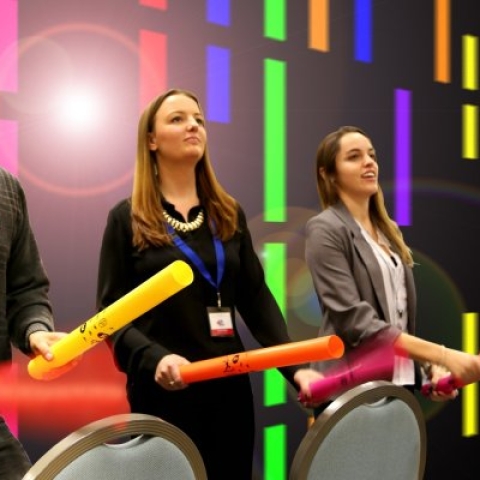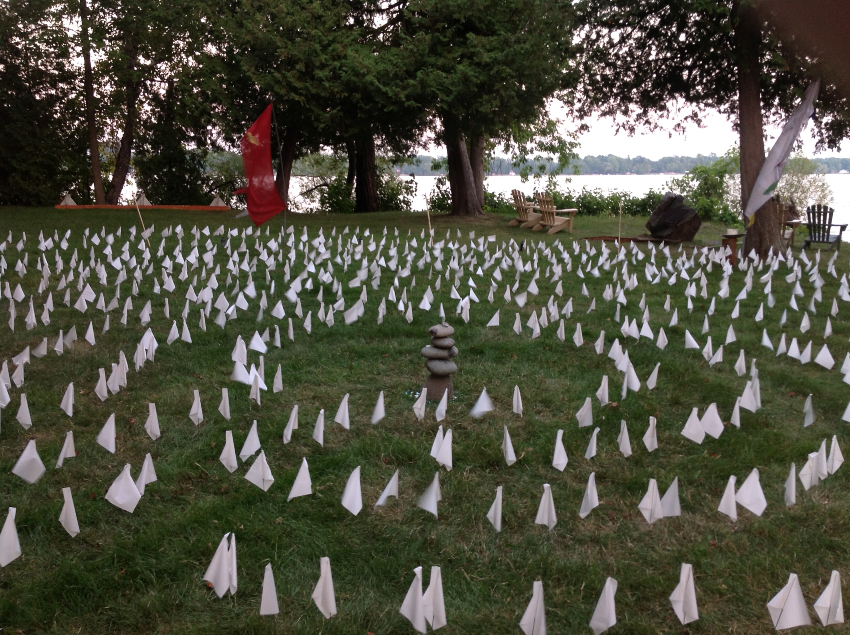5 Easy Ideas for Incorporating Play and Wellness Into Events

“If you think back to when we were children, what did we do all day, every day? We played.”
 Sharon Fisher, founder and chief “idea sparker” with Play With a Purpose, has spent the better part of the last three decades helping meeting planners incorporate elements that bring childlike — not childish — games into events. She extols the benefits of play in its many forms.
Sharon Fisher, founder and chief “idea sparker” with Play With a Purpose, has spent the better part of the last three decades helping meeting planners incorporate elements that bring childlike — not childish — games into events. She extols the benefits of play in its many forms.
“Play is how we built relationships with other kids; understood how to get along; learned how to communicate; and discovered how to be imaginative and creative,” she says.
As adults, we can start to regress in some of these areas. Play can help us relearn to open these channels, driving creativity and innovation. And what better place to do this than at a corporate event?
Participatory games continue to grow in relevance, in accordance with the growth of a related trend: wellness.
It all comes down to one simple truth, says Fisher: Play is wellness.
“There is a lot of research coming out about how our brain functions better and thinks clearer when we’re doing something active,” she notes. “It lends a natural link with [learning while] being physically active, engaging both our bodies and our brains at the same time to create a better experience.”
This sounds like an easy win. Planners can simply add something like a fun run or a yoga class to their event, and check off the box. But there are more effective ways of combining play and wellness that will help drive tangible engagement without cutting into your budget. Fisher explains five ideas below.

1. Plan Walking Conversations
A recent study showed that if you’re trying to learn something new, like a foreign language, your brain absorbs more if you do it while you are exercising. This can include walking or riding a stationary bike. On that same note, you can implement walking conversations within a meeting or session to help people think more clearly about a topic. Instead of saying “turn to your neighbor and reflect on X,” instruct the group to pair off and walk around the building to talk about the topic, then come right back.
2. Fill a Wagon With Ideas
Rather than have a group sitting around a table for a brainstorm session, break them up into groups of three and give each one a set of props: a Radio Flyer red wagon (or similar, but the nostalgia factor comes into play here!), a stack of blank notecards and some markers. Have each group go for a walk, with the instruction that they can’t come back until they’ve filled up their wagon with notecards full of ideas.
3. Incorporate Music
[Play With a Purpose hosts] an event called Boomtime (pictured at the beginning of the article), where people play musical tubes while watching a Guitar Hero-like video on the big screen. This stimulates two things: the power of gathering and the power of music. While you watch the screen and have to pay attention to when it’s your turn and the timing of play, you’re also physically banging on these tubes to make music, which is energizing.
4. Slow Things Down
The concept of play and wellness doesn’t have to mean loud, big movements. We also have an event called Medi-tainment, where we walk groups through a guided focusing exercise (that includes glow sticks!) before the conference starts to get them thinking about how they’re preparing for the day ahead. It’s the opposite of the frenzy of Boomtime; it’s a quiet, introspective, de-stressing exercise that helps you focus on what you want to get out of the event and how to make the most of it.
5. Make a Labyrinth
This isn’t as complicated (or expensive) as it sounds, though it can be time consuming. You can easily create a labyrinth in your conference venue — or outdoors — by using a diagram and laying it out with rocks, utility flag markers, string or even chalk in a parking lot. The idea is to create a walking circle, where participants can choose different directions to take. Just before entrance, you state your intent (e.g., coming up with an idea for X, or just feeling at peace) and then maintain silence throughout the walk. The repetitive action in a quiet setting helps clear your brain.

However you decide to incorporate play and wellness elements into your event, ensure you’re making it inclusive. Know who your audience is, and make sure they’ll have the physical ability to do what you’re asking them to do, says Fisher.
For example, “not all participants might be fit enough to do yoga, but everyone can do chair yoga,” says Fisher. You can adapt the concept and incorporate a session like this to get the group re-energized and refocused after lunch.
Have you successfully integrated elements of play into your events? We’d love to hear about them! Share with us on Twitter @CorpEventNews.


Add new comment